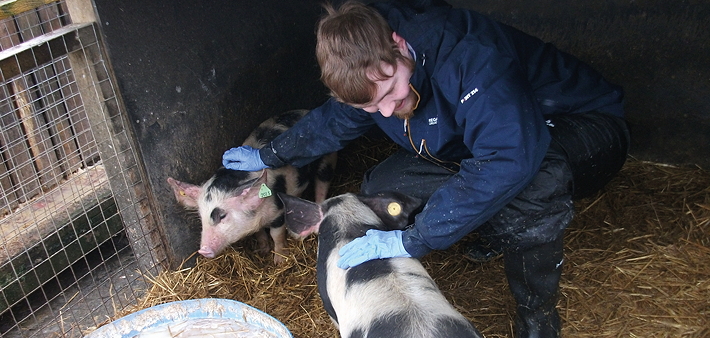Ensuring that livestock handling procedures are positive could be of benefit on commercial pig farms. That’s the conclusion of Myerscough College animal behaviour and welfare degree student Helen Ashton following a trial undertaken as part of her dissertation on the effects of human contact on pigs.
The trial involved recording the behaviour, girth, length, weight and stress (via cortisol levels) of weaned pigs in response to positive human contact – an independent researcher interacting with the pigs.
Helen Ashton’s peer, James Brogden (pictured above), interacting with the pigs
Helen used domestic pigs (Sus scrofa domesticus) to explore the effect of positive human contact on three aspects of pig welfare over a period of six weeks to test the hypothesis that handling procedures could have an impact on the production rate of agricultural animals, and that better handling procedures could increase growth rates.
After a pilot study to determine which behaviours to record, the pigs were divided into two groups based on breed and sex: a control group of eight pigs and a treatment group of 11. The treatment group received six hours of handling each week in the form of vocal communication and stroking from a human handler.
The girths, lengths, weights and behaviours of both groups were measured each week, and saliva samples were collected at weeks one, three and six of the study to be tested for cortisol as a way to calculate the stress levels of the pigs.
The results showed no significant differences in growth or cortisol levels, but the non-handled pigs were found to perform significantly more negative interactions than the handled pigs.
Behaviours within the groups also changed over time, with the handled pigs demonstrating more wood chewing behaviour in week six than in week one. This is classic behaviour seen in pigs, but its cause and effects are still not fully understood.
Helen, who first worked with pigs while at Lancaster’s Ripley St Thomas High School, which has its own farm, said the study suggested there could be a benefit to ensuring that handling procedures were positive on pig units.




